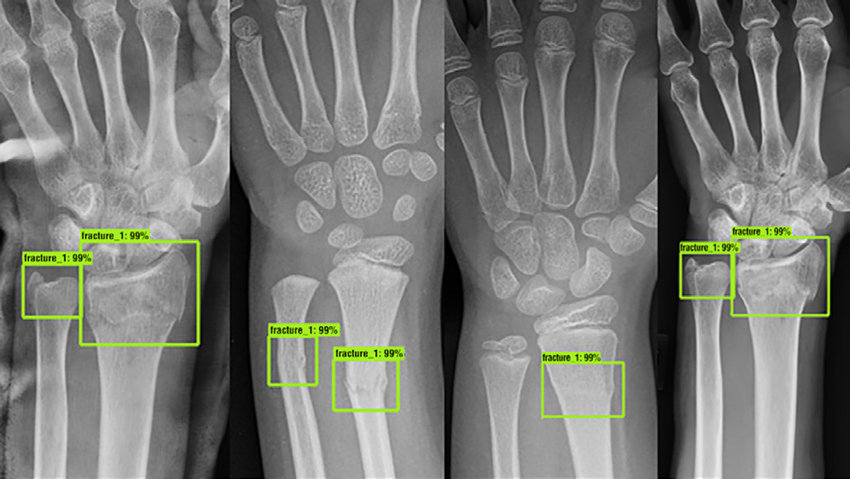Researchers are working on an artificial intelligence technique to help medics diagnose fractures more quickly.
Artificial intelligence can help clinicians diagnose fractures on x-rays, according to researchers at Boston University School of Medicine.
In a press release, Ali Guermazi, MD, PhD, chief of radiology at VA Boston Healthcare System and Professor of Radiology & Medicine at BUSM, said that their AI technology can swiftly and automatically discover x-rays that are positive for fractures and highlight such studies in the system so that radiologists can read those x-rays first.
The method also uses bounding boxes around locations where fractures are suspected to indicate regions of interest. This may reduce the time it takes for patients to receive a positive fracture diagnosis at the time of their hospital or clinic visit.
Fracture interpretation errors account for around a quarter of all dangerous diagnostic errors encountered in emergency rooms, according to researchers. In addition, during the evening and midnight hours, inconsistencies in the radiological diagnosis of fractures are more likely.
To identify leg, pelvis, torse, lumbar spine, and rib cage fractures, the AI algorithm was trained on a huge x-ray data set from several institutions. In the study, expert human readers determined the gold standard and compared human readers’ performance with and without AI aid.
To imitate real-life settings, a range of readers were used, including radiologists, orthopedic surgeons, emergency physicians, physician assistants, rheumatologists, and family physicians.
“Each reader’s diagnostic accuracy of fractures, with and without AI assistance, were compared against the gold standard. They also assessed the diagnostic performance of AI alone against the gold standard, the press release stated.
“AI assistance helped reduce missed fractures by 29 percent and increased readers’ sensitivity by 16 percent, and by 30 percent for exams with more than one fracture, while improving specificity by 5 percent.”
According to Guermazi, artificial intelligence (AI) can help radiologists and other professionals improve diagnostic performance and efficiency. Furthermore, the technology has the ability to improve the hospital or clinic’s patient experience.
Their research focused on fracture diagnosis, but the approach can be extended to a variety of diseases and ailments. Rather than replacing human healthcare practitioners, our ongoing research focus is on how to best use AI to assist human healthcare providers in improving patient care. One such example can be found in our research.
The study was supported by GLEAMER Inc, and the results were published in the journal Radiology.

Source: Health IT Analytics
